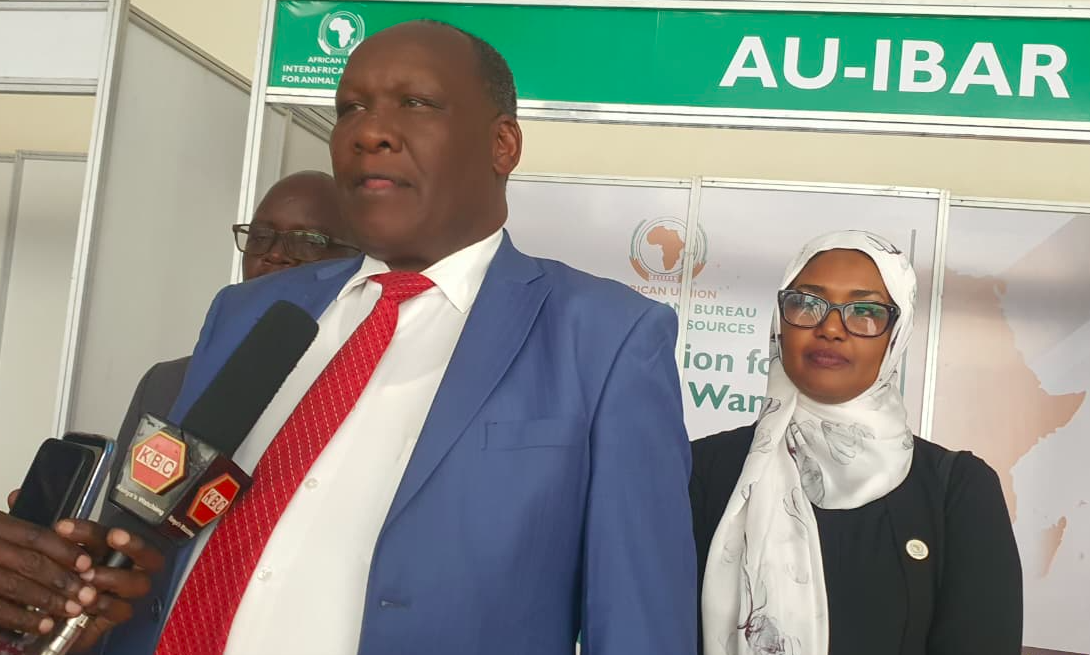 Kenya Tsetse and Trypanosomiasis Eradication Council chairman Geoffrey Muttai addresses media flanked by African Union Inter-African Bureau For Animal Resources director Dr Huyam Salih /Gilbert Koech
Kenya Tsetse and Trypanosomiasis Eradication Council chairman Geoffrey Muttai addresses media flanked by African Union Inter-African Bureau For Animal Resources director Dr Huyam Salih /Gilbert KoechAfrica is exploring a new vaccine to control and ultimately eliminate the tsetse fly and sleeping sickness trypanosomiasis across the continent.
Director Dr Huyam Salih of the African Union-Inter-African Bureau for Animal Resources (AU-IBAR) said drugs currently in use were developed in the 1950s. She emphasised the need for innovation in treating and curing trypanosomiasis, also known as sleeping sickness.
“We must mobilise resources not only for new drugs but also for vaccine trials against this disease,” she said during the closing of the 37th International Scientific Council for Trypanosomiasis Research and Control (ISCTRC). The conference was held at the Mövenpick Hotel, Nairobi.
Salih cited success in tackling the disease in humans, citing Kenya’s elimination of the illness. She emphasised, however, the need to match these efforts by tackling trypanosomiasis in animals, which continues to undermine food security and livelihoods.
The five-day conference was themed “Harnessing One Health Technologies and Innovations Towards Eliminating Trypanosomiasis in Africa.”
About 350 experts took part, 250 in person and 100 virtually from 30 AU member states, research institutions and international organisations.
They present 103 papers, covering human and animal trypanosomiasis, tsetse biology and control, socio-economic issues, and environmental impacts.
Agriculture CS Mutahi Kagwe highlighted the scale of the challenge in Kenya, where 23 per cent of the landmass is infested by tsetse flies.
“This has significant implications for our livestock and agriculture, particularly in rangelands where over 70 per cent of livestock are reared,” he said.
Annual losses are estimated at $143 million (Sh18.5 billion), he said.
Chairman Geoffrey Muttai of the Kenya Tsetse and Trypanosomiasis Eradication Council (KENTTEC) said Kenya has made notable progress. He said other African countries are drawing lessons from its experience. He also praised the conference for mentoring young scientists.
Salih urged stronger regional coordination, stressing that no single country can eliminate the tsetse menace.
“The ISCTRC provides a vital platform for sharing knowledge, best practices, and innovations to eradicate this threat from the continent,” she said.
Human African trypanosomiasis, is caused by protozoans of the Trypanosoma genus. The disease is transmitted to humans through bites of infected tsetse flies, which inhabit Sub-Saharan Africa.
Rural populations depending on farming, fishing, and animal husbandry remain the most vulnerable, in African countries, although in Kenya the human disease has been officially eradicated, meaning there are not many cases.











